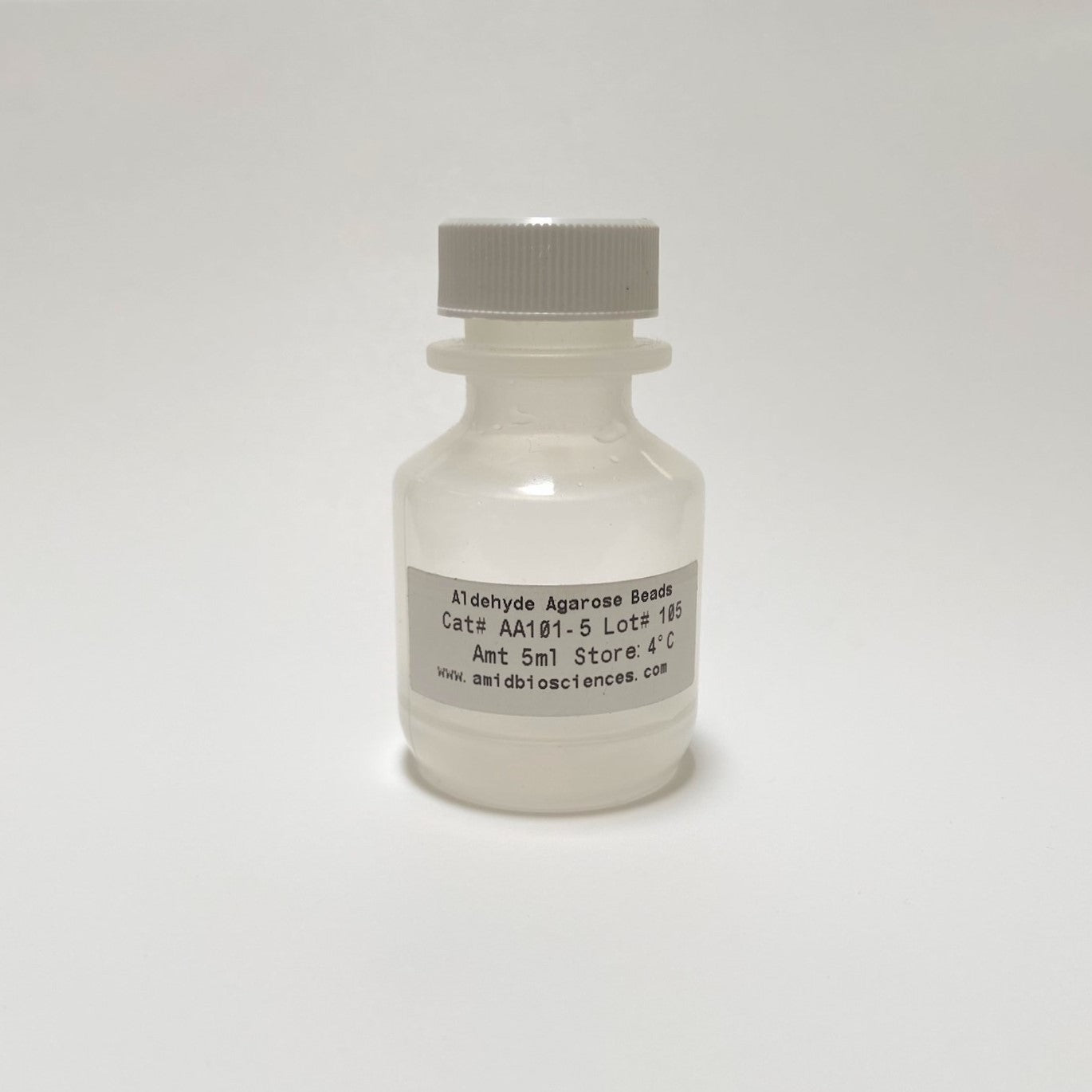High Coupling Efficiency Aldehyde Agarose Beads
High Coupling Efficiency Aldehyde Agarose Beads
Couldn't load pickup availability

Amid Biosciences offers the Aldehyde Agarose Beads resins with 4% crossslinked agarose.
Aldehyde agarose beads allow the covalent binding of agarose to the amino groups of the chosen biomolecule (peptides, enzymes, antibodies and etc.). Unlike in other resins which are available for this application, the bond between the Aldehyde Agarose Beads and the biomolecule is irreversible. Aldehyde agarose beads are ready to use and require no activation.
The coupling reaction involves spontaneous formation of Schiff base bonds between aldehydes groups (on the support) and amines (on the ligand) and their subsequent stabilization by incubation with a reductant (sodium cyanoborohydride or sodium borohydride). The entire coupling reaction occurs in 2 to 6 hours in simple non-amine buffers such as PBS or borate. Coupling efficiency with antibodies and typical proteins is generally greater than 85%, resulting in 1 to 20 mg of immobilized protein per milliliter of agarose resin.
Coupling efficiencies with aldehyde resin exceed those obtained with cyanogen bromide (CNBr) activated supports. Furthermore, aldehyde forms a bond with the amine-containing ligand that is more stable than with the CNBr method and is uncharged. These properties provide a more leak-resistant immobilization and lower nonspecific binding when used for affinity purification procedures.
Catalog # AA-101-5 (5 mL), AA-101-10 (10 mL)
This material is offered for research, laboratory or further evaluation purposes
Product Details:
- Ideal for antibodies and other proteins – immobilize molecules via primary amines (-NH2)
- Flexible coupling conditions – efficient (>85%) coupling over a wide range of pH (4-10) and buffer conditions (PBS or other non-amine buffer with or without organic solvent); regular (PBS, pH 7.2) and enhanced (citrate-carbonate, pH 10) coupling protocols provided
- Stable, permanent immobilization – Coupling reaction results in stable, leak-resistant secondary amine bond between resin and ligand
- Better than immobilization to CNBr-activated agarose – bond is more stable and uncharged, resulting in less nonspecific binding in affinity purification procedures
- Versatile – prepared affinity resin is adaptable to column and batch affinity techniques and the resin is reusable for typical applications based on protein binding interactions
Storage in 2-8 °C
International Shipping: Product requires shipping on ice packs. Please contact info@amidbiosciences.com for shipment estimates.
References:
Domestic Shipping in the US
Temperature sensitive products requiring shipping/handling on dry ice are shipped via UPS Next Day Air Saver. These products are delivered the next day if your order is placed before 3 PM PST. A dry ice surcharge is included in the shipping cost at checkout. For orders totaling over $1,000, free shipping and handling will be applied to the order.
International Shipping
Orders to be shipped internationally (outside of the US) can be shipped via DHL Express Worldwide or FedEx International Priority. Please contact info@amidbiosciences.com if you would like your company's shipping account to be used for the order. Our customers have sometimes negotiated lower shipping rates than us.
- Choosing a selection results in a full page refresh.
- Opens in a new window.

